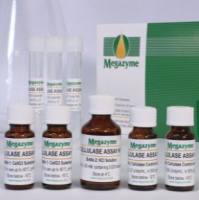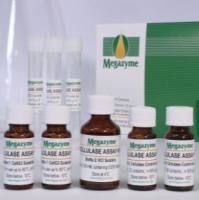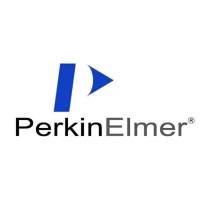Slide Preparation for Manual Microdissection
互联网
These methods were successful in our lab using prostate tissue and for our specific objectives. Investigators must be aware that they will need to tailor the following protocol for their own research objectives and tissue under study.
Manual microdissection and subsequent molecular analysis can be carried out on slides stained using standard hematoxylin and eosin methods. However, if cell types that are (or are not) expressing a specific protein are required for a study, then more advanced slide preparation methods such as Immuno-LCM may be utilized.
1. Materials
-
- 70%, 95%, 100% ethanol
- Xylenes, mixed, ACS reagent (Sigma)
- Glycerol, ultra pure (Gibco)
- Deionized water
- Hematoxylin solution, Mayer's (Sigma)
- Eosin Y solution (Sigma)
-
Complete, mini protease inhibitor cocktail tablets (Roche Corp.)
Important: For all protein analysis, dissolve 1 protease inhibitor cocktail tablet per 10 ml of each reagent, except xylene.
2. Storage of Sections
- Recut paraffin sections are stored at or below room temperature. Do not deparaffinize until immediately prior to microdissection.
- Low-melt polyester sections are stored at 4°C.
- Frozen sections are stored at -80°C or below.
3. Methods
TIP: Use the minimal amount of staining to visualize the tissue for microdissection. This will significantly improve macromolecule recovery. For example, hematoxylin and eosin can be used at 10% of their standard concentrations. Since the slides are microdissected without a coverslip, the tissue is not index-matched and substantial light scattering occurs, typically producing "dark" images. Thus, both image quality and molecular recovery can be improved by decreasing stain concentrations.
A: Paraffin-embedded Sections or Frozen Sections
- For paraffin-embedded sections, start at step 1.
- For frozen-embedded sections, start at Step 4.
Place the sections in the following solutions:
-
- Fresh xylenes (to depariffinize the sections) - 5 min
- Fresh xylenes - 5 min
- 100% ethanol - 30 sec
- 95% ethanol - 30 sec
- 70% ethanol - 30 sec
- Deionized water - 30 sec
- Mayer's Hematoxylin - 30 sec
- Deionized water - rinse 15 sec (x 2)
- 70% ethanol - 30 sec
- Eosin Y - 15 sec
- Deionized water - 30 sec (x 2)
-
3% glycerol in deionized water - 30 sec
TIP: Soaking in 3% glycerol is particularly helpful in preparing the tissue for microdissection because it renders the tissue less brittle and dissected tissue fragments are easier to procure.
- After removing the slide from the 3% glycerol step, shake the slide in the air to remove the layer of glycerol/water.
- The next 5-10 mins are the optimal time for microdissection. The tissue is dry, but retains a soft consistency. If the dissection takes more than a few minutes, the tissue will become increasingly brittle and the dissected fragments may be repelled as the needle is brought in proximity to the tissue. If the tissue becomes overly dry, re-soak in the 3% glycerol/water solution for 1-2 minutes.
B: Low-melt Polyester-embedded Sections
TIP: Proceed gently when staining sections embedded in polyester wax. Even though the sections are placed on charged slides, the tissue has a tendency to detach from the slide, and therefore should be monitored carefully throughout the staining procedure.
Place the sections in the following solutions:
-
- 100% ethanol - 5 min
- 100% ethanol - 5 min
- 95% ethanol - 30 sec
- 70% ethanol - 30 sec
- Deionized water - 30 sec
- Mayer's hematoxylin - 30 sec
- Deionized water - 30 sec
- 70% ethanol - 30 sec
- Eosin Y - 15 sec
- Deionized water - 30 sec (x 2)
- 3% glycerol in deionized water - 30 sec
- The tissue is now ready for microdissection .
TIP: It is important to ensure that the thin coat of fluid covering the slide after removal from the glycerol/water is removed. Dissection with this fluid layer present results in diffusion of tissue fragments with potential for "contamination" of samples. Additionally, dissection of the tissue under fluid produces large strips of tissue that are not easily homogenized in extraction buffers.








